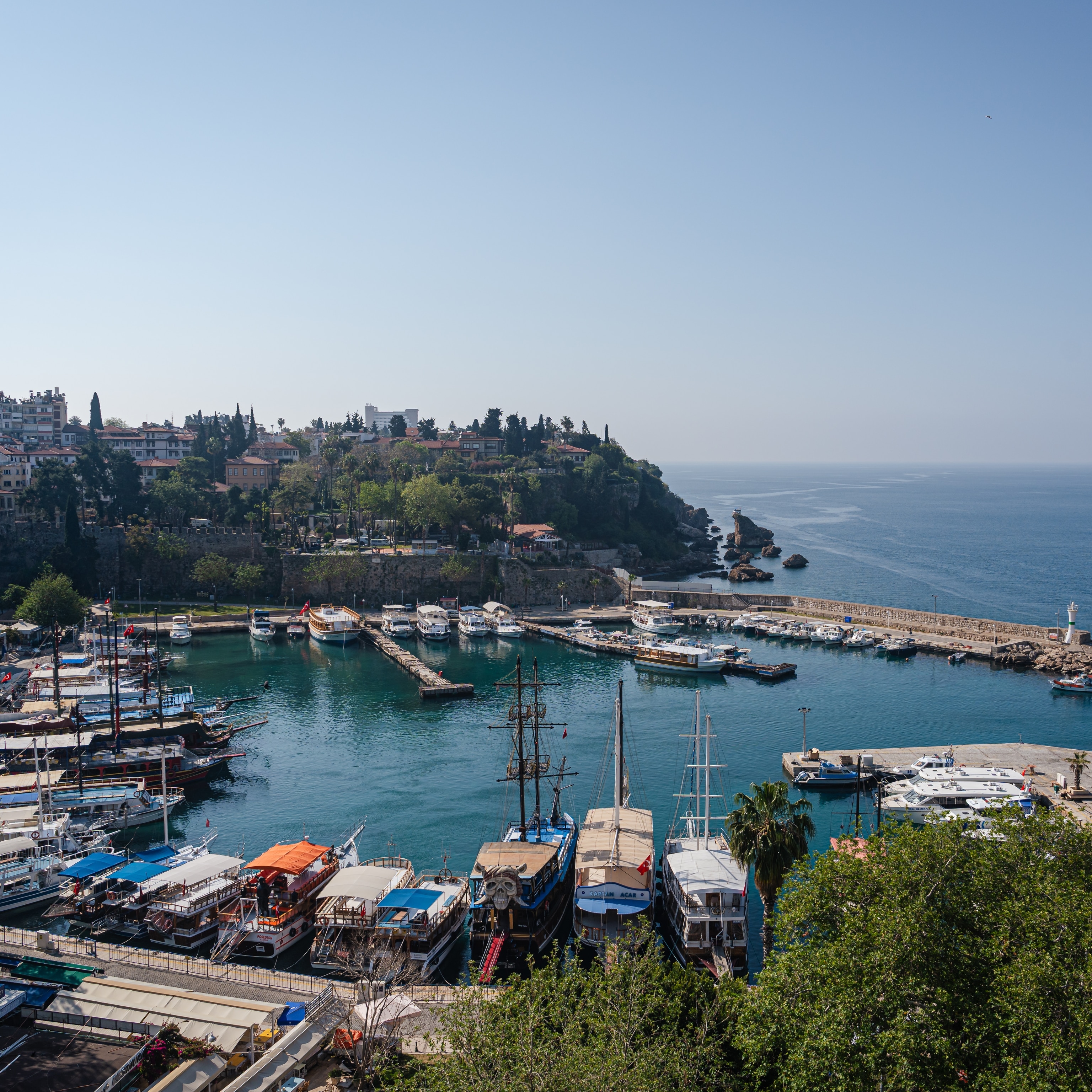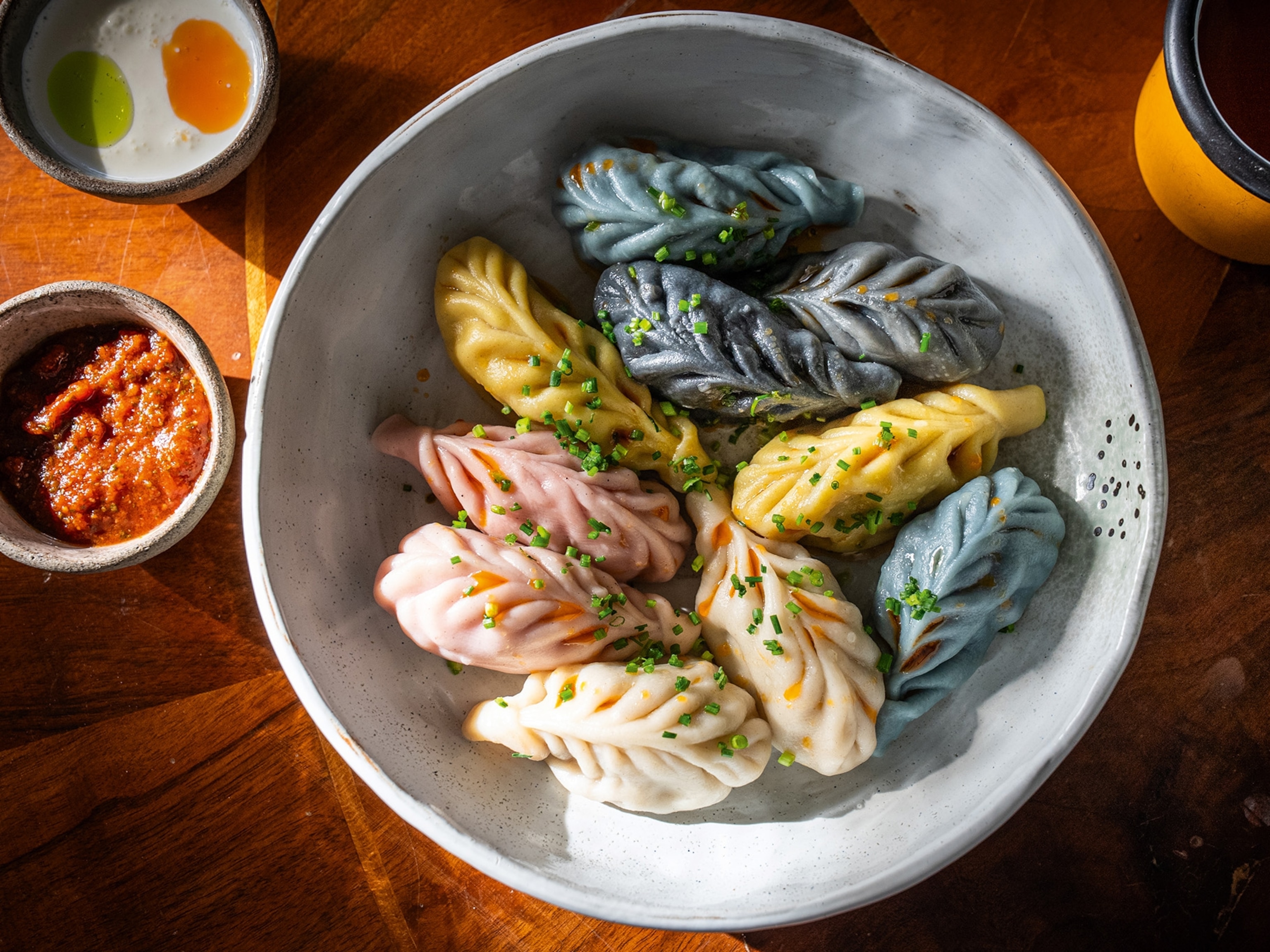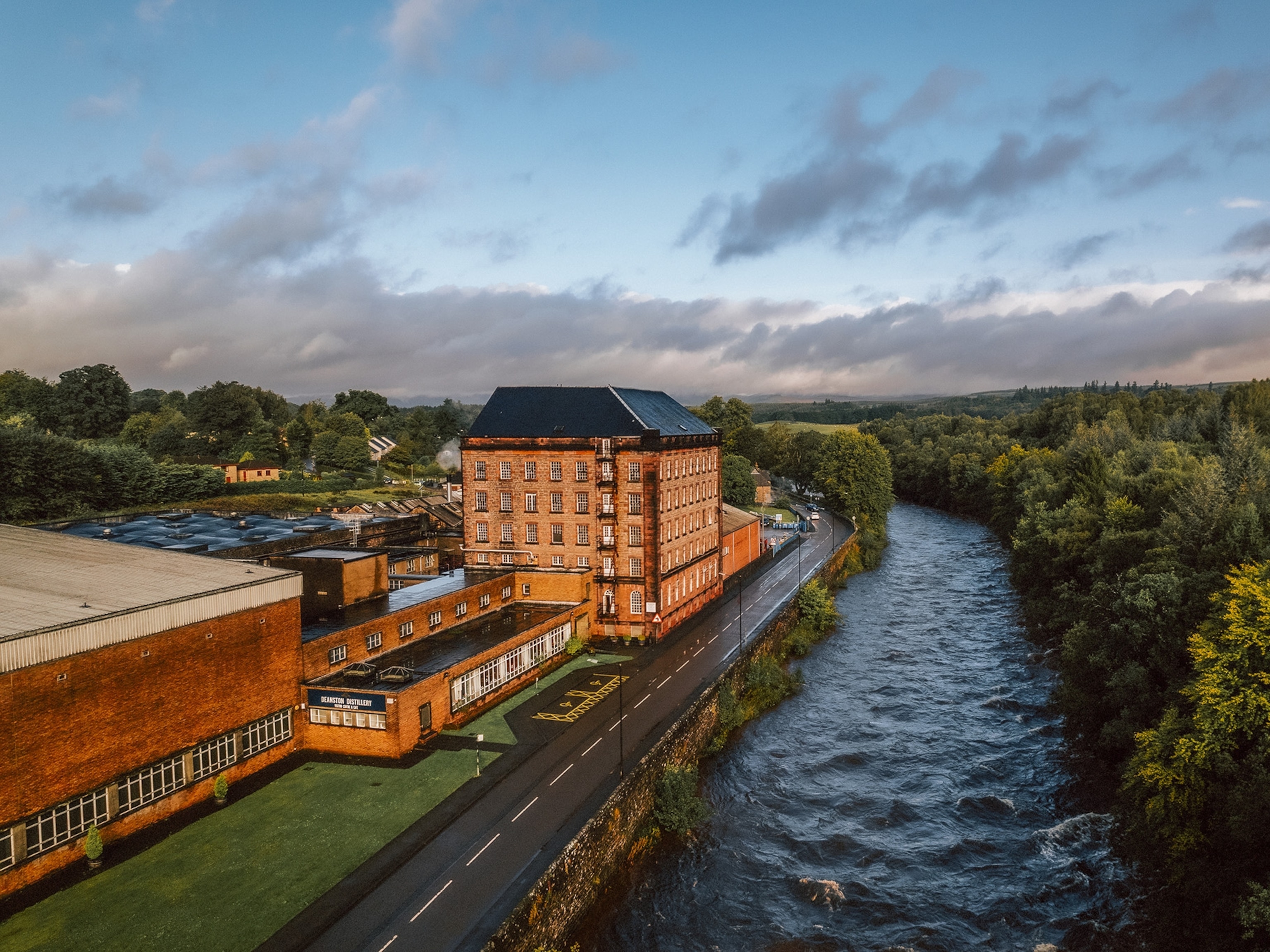
Where to eat in Fife, Scotland
Fife is connected to neighbouring regions by six bridges, but when it comes to food, it's gloriously self-sufficient, with meat, tatties, oats, just-caught shellfish, and unique seaweeds just some of its hyper-local treasures.
There's a salty tang on the breeze as I watch a canoeist paddle out on the Firth of Forth, herring gulls — known here as 'maws' — swooping overhead. Beyond the wall where I sit there's a rocky beach, and in the other direction, a little harbour arm cradling a cluster of small boats. I'm in St Monans, one of a number of lovely villages with whitewashed buildings topped with steeped gable roofs, that shine like pearls threaded on the necklace that is the East Neuk of Fife. It's sunny enough to sit on this sublimely situated patio with a starter of pickled mackerel, followed by a perfect, wobbly goat's cheese souffle. My Fife-born, London-living foodie pal has nudged me in the direction of Craig Millar @ 16 West End, promising fabulous cooking in a spectacular location. As the wind picks up I move in to the shelter of the dining room, and a table with a picture window on to that glorious view. The fillet of cod, in an Arbroath smokie dashi, with samphire, peas, brown shrimp and Ratte potatoes is exquisite.
Chef Craig Millar joins me in the back of the restaurant — an old fisherman's cottage 'made to look like an old cosy nook in winter' — to talk about the food of Fife, a peninsula bounded by the Firth of Tay and the Firth of Forth, and the North Sea, connected to its neighbouring regions by six major bridges.
"In Fife we have absolutely everything — seafood, cattle, sheep, potatoes, glorious vegetables and much more on our doorstep. It's great for me as a chef as we get everything very early and fresh. It would be possible to lose the bridges and we'd be ok," he laughs. "The essence of my cooking is flavour and with this produce I try to keep many dishes simple, some a little fancier, all focused on incredible taste."
The Kingdom of Fife's larder is fertile: farms work the rich soil to grow vegetables — potatoes and root vegetables especially — cereals, soft fruits, apples and pears, as well as rearing beef and lamb. Driving by fields of oats, wheat and barley, dancing golden in the sunlight, I can see what drew Millar to Fife. It's the same lure that saw local boy Billy Boyter, who grew up in Cellardyke, then cooked in some of Edinburgh's best kitchens, return to Fife's East Neuk (a Scots' word for nook) to take over The Cellar in Anstruther in 2014, winning a Michelin star just a year later for this small restaurant housed in a former smokehouse and cooperage.
"It's all about using good-quality Scottish ingredients across the seasons. We evolve our menus gently as things become available," explains Boyter. "I'm on the stove every single day and I go out foraging at least twice a week for coastal plants and seaweed such as pepper dulse and dabberlocks. Inland we find rosehips, brambles, rowan berries and elderberries, which we turn into vinegars and other things that will keep us going through the winter when things are sparse. My ethos is a celebration of Scottish produce."
I drive to the Balcaskie estate, a modern working farm in the heart of the East Neuk, to meet owner Toby Anstruther, creator of the Bowhouse Food Weekend, a regular monthly Saturday and Sunday market showcasing the best of Fife food. As we walk among stalls selling locally grown horseradish, broccoli and kale cut from the nearby fields just hours ago, homemade chutneys, cheeses and breads, he says: "Bowhouse allows people to engage face to face with the producer, bringing them closer to their food and its sources."
Jane Stewart of St Andrews Farmhouse Cheese Company offers me chunks of crumbly Anster, her award-winning cheese named after the local pronunciation of Anstruther (the largest of Fife's fishing villages), made with unpasteurised milk from her Holstein Freisian cows.
An old steading (smallholding farm) houses local producers who are looking to grow beyond making their wares on the kitchen table. "We're smoothing the transition from hobby to business," he says. "We're now growing ancient varieties of grain on the estate, and the old grain mill has become a bakery. Minick of St Andrews butchers has a meat chiller and hanging space where the team can bring people in and teach them about rare breeds and butchery. It's all about providing the missing link between farm to fork."
Bringing people closer to their food — whilst cutting out the middle man — is also key at Balgove Larder, a big cracker of a farm shop not far from St Andrews' golf links. I meet founder Will Docker at the adjoining Steak Barn, created in an old saw mill with walls made from old 'tattie boxes', the name of potato grower A Bowie still printed on the sides. "We got a blacksmith to make us a barbeque and we offered steak from our own estate, chips, salad and local beer. It began as a pop-up but we built on it, insulated the tattie boxes, put a kitchen in the back," he says. "Every year we are nudging towards a restaurant, though you don't get many restaurants with gravel floors."
Three of us order one tomahawk, a 2kg bone-in ribeye, the char from the wood-fired grill rendering it crisp and smoky on the outside, the beef tender and grassy inside — there's more than enough left on the bone to be wrapped up in foil and taken away.
From turf to surf: the lobster and crab in Fife are sweet and fresh. At St Andrews Bar and Grill — the restaurant with sea views at the Fairmont St Andrews hotel — they're caught by Andrew Whiston on The Codfather, a lobster boat that works its way between his 200 creels. A cheaper option is to head to the harbour in the bonnie village of Crail, to dine at little Reilly Shellfish hut where they cook lobsters to order in 15 minutes from tank to plate (you can pick one up for a picnic on the beach). On a previous visit to Crail I chanced upon a fisherman finishing up for the day and bought four crabs for £6 — so cheap I was dancing, just like the crabs did in the boot of the car.
The ancient town of St Andrews is famous for many things — it's the 'home of golf' as well as a great university — but one of its best institutions is Jannettas Gelateria, a pastel-hued palace dedicated to gelato. Owner Nicola Hazel is a fourth generation Janetta. "My great, great-grandfather came over from Italy, began with a soda fountain and billiard hall, then moved into selling fish and chips and ice cream. By the time my dad was in charge we had six flavours. Now we have 54 flavours on show and a pool of 100 to choose from," she says.
Hazel works with nearby Pittormie Fruit Farm, cultivators of an array of soft berries, to produce distinctive local flavours. The gelato uses cream, milk and butter from Crieff and a stabiliser made from seaweed.
It's pouring with rain on my visit, but as she places pots of Fife strawberry, bramble and Pittormie Tayberry gelato and mandarin sorbet on the table, Hazel sees me shiver and admonishes: "It's never not an ice cream day." The flavours absolutely sing — so much so that I stop later at Pittormie to buy some berries — it's too late in the year to pick my own, but in season you can pluck loganberries, gooseberries, Tayberries (a cross between a blackberry and a raspberry, named after the River Tay), raspberries and other soft fruits from the bushes. These berries become the dessert for my train picnic: cheeses, oatcakes, smoked fish and St Andrews Brewing Co. Beer. I may be hurtling across the Forth rail bridge and on to London, but I want to take the many tastes of Fife with me.
Three great places to eat in Fife
1. Craig Miller @ 16 West End Restaurant
Lunch here is incredible value, with meals made mainly from local produce, according to what's available. Starters can include haddock and cheese tart; mains, roasted breast of guinea fowl, jus, charred little gem lettuce, truffle mashed potato; and desserts, chocolate ganache, orange and Campari sorbet, almond crumb. Lunch is £28 for three courses and £34 for four courses.
2. The Cellar, Anstruther
Offering a set, nine-course tasting menu, chef Billy Boyter uses Scottish produce to create seasonal dishes that demonstrate technique and imagination. Sharpes Express potato (a locally grown, heritage variety), Arbroath Smokie, Crowdie (a Scottish cheese), Scots lovage (an aromatic, foraged plant) are perfectly paired. Dinner with nine-course tasting menu, £70 per person. Wine Pairing £55.
3. The Steak Barn at Balgove Larder
This restaurant housed in a former sawmill is queued out at the weekends with locals and tourists craving great meat and truly excellent chips. Using meat grown on the farm, 28-day-hung steaks are grilled above a wood fire, chips are twice fried, and sides include beer-battered onion rings, grilled beef tomatoes and Portobello mushrooms. Balgove beef burger from £9.50, steaks £18.95 and sharing boards from £54.95.
Five foods to look out for
1. Soft berries
Raspberries, strawberries, Tayberries, loganberries: all kinds of soft fruits grow particularly well in the Kingdom of Fife.
2. Anster cheese
Jane Stewart's dry, crumbly textured cheese with milky and fresh flavours is matured for eight weeks.
3. Fife cut oatcakes
Oats are one of the many cereals grown here. Fife cut refers to the triangular shape of oatcakes used by generations of Fife bakers.
4. Janettas Gelato
The Janetta family has been making gelato in St Andrews for more than 100 years. There are 54 flavours available over the counter.
5. Shellfish
Crab and lobster are creeled by boats based in the many coastal villages along the East Neuk. Sometimes, they'll be served with an hour of being landed.
Essentials
The Fairmont St Andrews has double rooms from £179 a night, room-only.
welcometofife.com foodfromfife.com
Follow @audreygillan
Published in the December 2018 issue of National Geographic Traveller (UK)
Follow us on social media
Twitter | Facebook | Instagram







